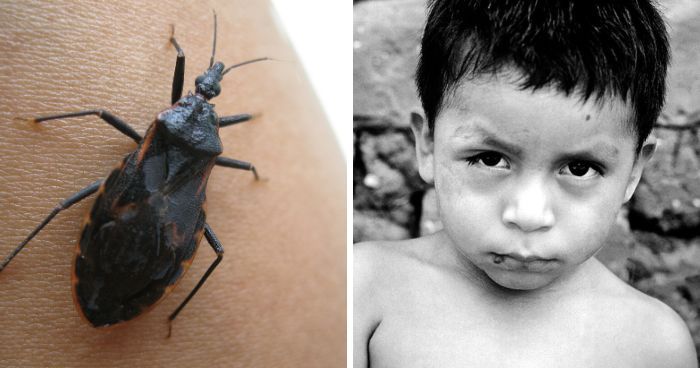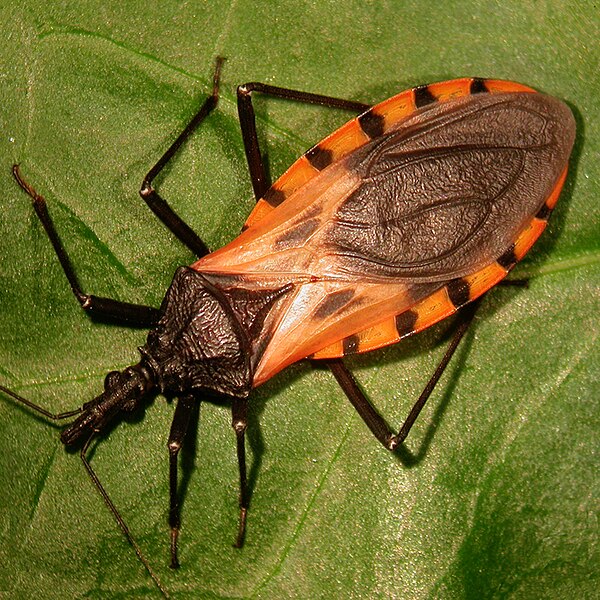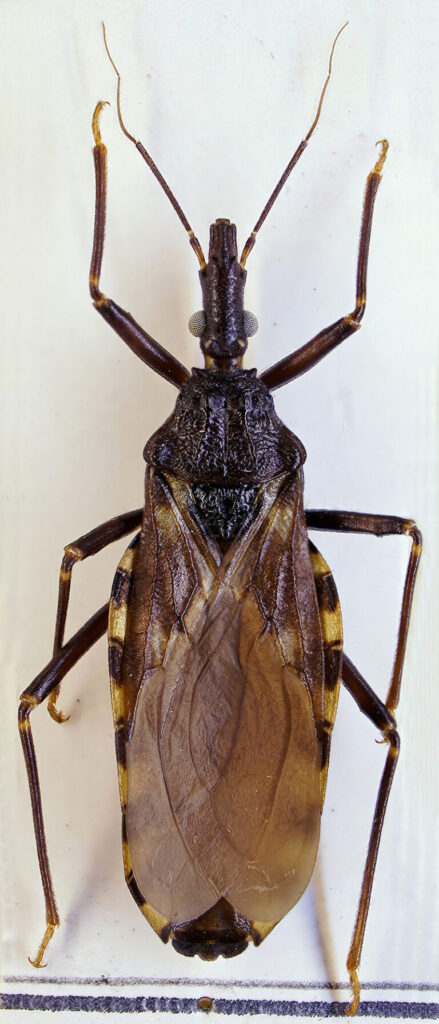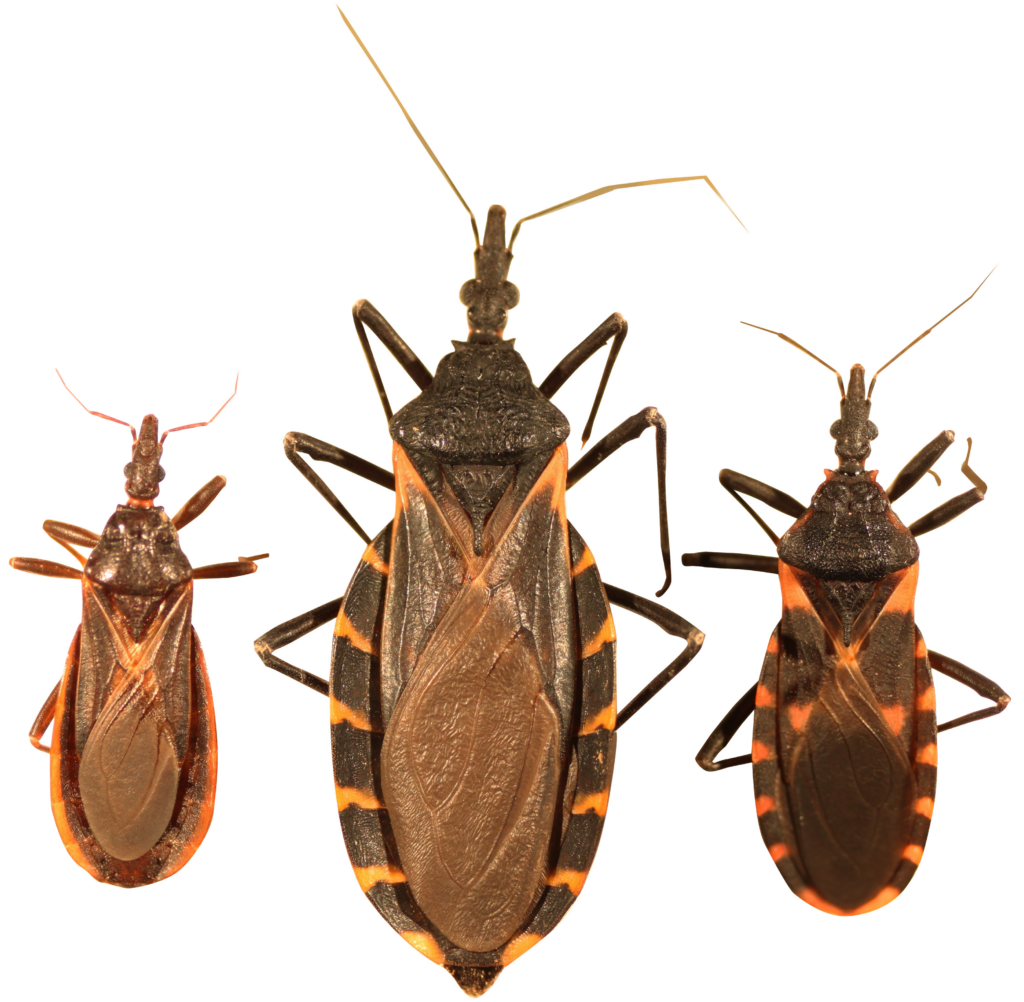These Deadly Bugs Come Out At Nighttime, And Attacking Victims, They Silently Kill Or Leave Them With A Lifelong Infection

Emiliana Rodriguez recalls her childhood, observing a group of friends playing soccer at night. Amidst the game, tragedy struck as one player collapsed and lost their life.
Rodriguez, originally from Bolivia, developed an apprehension for the night and the enigmatic threat of Chagas, a "monster" only active during nocturnal hours. Her acquaintance was among the 12,000 individuals claimed by Chagas each year – a sinister ailment transmitted by nocturnal bugs, which stealthily infects up to 8 million people annually.
Despite her departure from Bolivia to Barcelona 27 years ago, 42-year-old Emiliana Rodriguez continues to grapple with Chagas disease, a condition she aptly terms a "monster."

"The fear usually gripped me at night. Sleep often eluded me," she recounted. "I was gripped by the fear of slumbering and not awakening."
Rodriguez learned of her status as a Chagas disease carrier eight years ago while expecting her first child. The memory of her friend's demise weighed heavily, as she worried about her own offspring. She shared, "I was paralyzed with shock, my mind echoing stories my relatives had recounted about sudden deaths. I agonized over my baby's fate."
Nonetheless, Rodriguez underwent treatment to prevent the transmission of the parasite to her unborn child through the placenta, and her newborn daughter received a negative test result.
Similarly, Elvira Idalia Hernandez Cuevas, a Mexican mother, was thrust into awareness of Chagas when her daughter was diagnosed with the silent killer. Her daughter, a Mexican teenager named Idalia, was identified as a Chagas carrier while donating blood near Veracruz. The diagnosis opened Hernandez's eyes to this little-known danger.
"I had never heard of Chagas, so I began researching it online," Hernandez recounted. "The term 'silent killer' filled me with terror. I felt lost, not knowing where to turn."
Hernandez's experience is not isolated; many remain oblivious to the peril posed by these persistent insects. Dr. Carlos Ribeiro Justiniano Chagas, a Brazilian physician and researcher, identified the first human case of Chagas disease in 1909. In recent decades, the geographic scope of Chagas disease has expanded across the Americas, Europe, Asia, and Oceania.

During the night, when individuals slumber, these "kissing bugs" emerge from the walls of low-income dwellings in rural and suburban settings. The infection spreads when an infected bug bites a human or animal, subsequently defecating on the skin. Scratching the area can introduce the excrement into the body through cuts or open sores.
According to the World Health Organization (WHO), the majority of the 6 to 7 million global Chagas cases remain undiagnosed. These cases cluster in Mexico, Central America, and South America. The disease can persist untreated, resulting in approximately 12,000 deaths annually. It surpasses other parasite diseases, including malaria, in its toll on Latin America according to the World Health Organization (WHO).
These people live in Mexico, Central America, and South America.

Though approximately 300,000 people are infected with these bugs in the United States, the problem is not endemic. The CDC highlights that 20-30% of those infected, even if asymptomatic, may eventually develop heart or gastrointestinal complications.
The challenge of treatment and prevention is compounded by an abysmally low global diagnosis rate of merely 10%. The lack of awareness extends to healthcare professionals, including Hernandez and her daughter, who struggled to find information and support.
Hernandez's persistence led her to connect with a relative in the medical field, ultimately gaining the necessary attention. As the President of the International Federation of Associations of People Affected by Chagas Sickness (FINDECHAGAS), she is devoted to amplifying awareness until Chagas garners the attention it warrants.

“In Mexico, the authorities say that there aren’t many people affected by Chagas and that it’s under control, but that’s not the situation,” explains Hernández. “Medical professionals don’t receive any training and mistake Chagas for other heart diseases. The majority don’t realize there is Chagas in Mexico.”
In terms of global health policy, the World Health Organization (WHO) classifies Chagas as a neglected tropical illness.
Chagas disease treatment
Colin Forsyth, a research manager at the Drugs for Neglected Diseases Initiative (DNDi), explained that Chagas is neglected partly because “it’s a silent disease that stays hidden for so long in your body … because of the asymptomatic nature of the initial part of the infection.”
Forsyth elaborated on his previous statement by saying, “The people affected just don’t have the power to influence healthcare policy. There’s this confluence of biological and social issues that keep it hidden.”
Transmission of Chagas disease from mother to child during pregnancy or childbirth, as well as through blood transfusions and organ transplants, has recently come to light as the disease spreads to new continents.
The Chagas Hub was founded by Professor David Moore, a doctor at London’s Hospital for Tropical Diseases, with the aim of “more people tested and treated, and to manage the risk of transmission, which in the UK is from mother to child,” he said.

Moore has stated that progress towards eliminating Chagas is “glacial,” and addressing the target set by WHO for a 2030 disease elimination, he said, “I can’t imagine that we’ll be remotely close by 2030. That seems highly unlikely.”
Moore states that the current treatments for Chagas disease, which have been around for 50 years or more, are “toxic, unpleasant, and not particularly effective.” These treatments include benznidazole and nifurtimox.
A newborn can be cured, but there’s no promise that the same drugs can stop or slow the disease in an adult.
For Rodriguez, the most severe reactions included an allergic rash, dizziness, and nausea. She has finished treatment and now has annual checkups.
Moore argues that preventing the spread of Chagas disease requires more effective therapy, but pharmaceutical corporations currently see no commercial value in developing such drugs.
As president of the International Federation of Associations of People Affected by Chagas sickness (FINDECHAGAS), Hernández is on a mission to make the silent sickness louder until there is a bigger market appeal to create additional treatments.
I think I’ve found a triatomine bug; what should I do?
To combat this “monster,” Rodriguez is in Spain, where she is working with the Barcelona Institute for Global Health to raise public awareness of Chagas disease.
“I’m fed up with so much silence,” Rodríguez says. “I want people to talk about Chagas, and to know about it. I want people to get tested and to get treatment.”
Plus, their voices are being heard.
In honor of the day in 1909 when Carlos found the first human case of Chagas disease, the World Health Organization instituted April 14 as World Chagas Disease Day.
The World Health Organization (WHO) states, “Global targets for 2030 and milestones are set out to prevent, control, eliminate and eradicate a diverse set of 20 diseases and disease groups.” Even Chagas is included.
The Centers for Disease Control and Prevention advises the following measures to avert an infestation:
- Fill in the spaces between the floor, ceiling, walls, and doors.
- Clear the area around your home of any debris.
- Repair damaged window and door screens and use them.
- Close off any access points to the outdoors, the basement, the attic, and the rest of the house.
- Have pets sleep indoors, especially at night
Keep your home and any outdoor places where your pet spends time clean, and inspect for pests on a regular basis.
The Centers for Disease Control and Prevention advises against squashing a kissing bug if you stumble across one.
Carefully placing the bug in a jar and filling it with rubbing alcohol or freezing it in water are better alternatives.
After that, you should bring the bug in its container to a university lab or health agency for identification.
It’s scary to think these insects make their homes in our walls; it’s like the monster in the wall stories you heard as a kid.
Chagas and other Neglected Tropical Diseases need to be eradicated, and we hope the WHO follows through on its vow to do so.
Please SHARE this story and help raise awareness on this silent disease!
Source: https://dailypositiveinfo.com
DISCLAIMER: THIS WEBSITE DOES NOT PROVIDE MEDICAL ADVICE The information, including but not limited to, text, graphics, images and other material contained on this website are for informational purposes only. The purpose of this website is to promote broad consumer understanding and knowledge of various health topics. It is not intended to be a substitute for professional medical advice, diagnosis or treatment. Always seek the advice of your physician or other qualified health care provider with any questions you may have regarding a medical condition or treatment and before undertaking a new health care regimen, and never disregard professional medical advice or delay in seeking it because of something you have read on this website.
